
Code_Aster
®
Version
5.0
Titrate:
SDLL02 - Beam hurled, embed-free, folded up on it even
Date:
19/08/02
Author (S):
P. MASSIN, F. LEBOUVIER
Key
:
V2.02.002-B
Page:
1/10
Manual of Validation
V2.02 booklet: Linear dynamics of the beams
HT-66/02/001/A
Organization (S):
EDF/AMA, DeltaCAD
Manual of Validation
V2.02 booklet: Linear dynamics of the beams
V2.02.002 document
SDLL02 - Beam hurled, embed-free,
folded up on it even
Summary:
This two-dimensional problem consists in seeking the frequencies and the modes of vibration of a structure
mechanics, made up of a hurled, embedded beam free and folded up on itself.
The problem arising does not have physical significance. It on the other hand makes it possible to validate the search of
Eigen frequencies of bending multiples and the search of the modes double in a subspace of command 2.
In this test, one carries out three different modelings:
·
in the first modeling, the boundary conditions are imposed using parameters of
Lagrange (control
AFFE_CHAR_MECA
) and the clean values and vectors are calculated by
method of Lanczos (control
MODE_ITER_SIMULT
, method:
“TRI_DIAG”
),
·
in the second modeling, the boundary conditions are imposed by removing degrees
of freedom in the matrices of mass and stiffness (control
AFFE_CHAR_CINE
) and values and
clean vectors are calculated by the method of Bathe and Wilson (control
MODE_ITER_SIMULT
,
method:
“JACOBI”
),
·
in the third modeling, one checks the behavior of modeling
COQUE_C_PLAN
in
dynamics. The eigenvalues and the clean modes are calculated with the control
MODE_ITER_SIMULT
and with the method of SORENSEN.
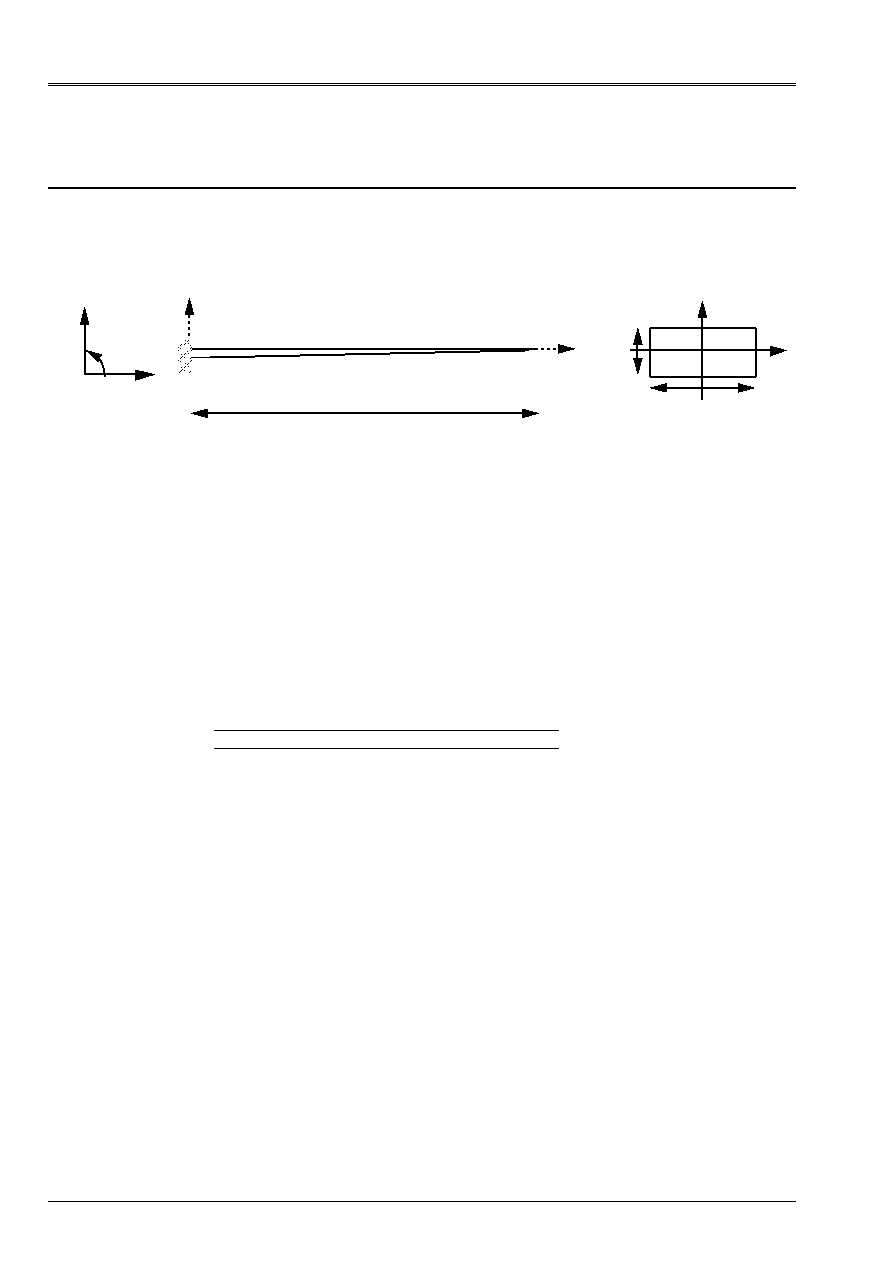
Code_Aster
®
Version
5.0
Titrate:
SDLL02 - Beam hurled, embed-free, folded up on it even
Date:
19/08/02
Author (S):
P. MASSIN, F. LEBOUVIER
Key
:
V2.02.002-B
Page:
2/10
Manual of Validation
V2.02 booklet: Linear dynamics of the beams
HT-66/02/001/A
1
Problem of reference
1.1 Geometry
X, U
y, v
X
y
With
C
L
B
Z
y
H
The geometrical characteristics of the beam constituting the mechanical model are as follows:
Length: L = 0.5 m
Rectangular cross-section:
Height:
H = 0.005 m
Width:
B = 0.050 m
Surface:
To = 2.5 10
4
m
2
Moment of inertia:
I
Z
= 5.208 10
10
m
4
The co-ordinates (in meters) of the points characteristic of the whole of the beams are:
WITH B
C
X 0.
0.5
0.
y 0.
0. 0.
1.2
Material properties
The properties of material constituting the beam are:
E
= 2.1 10
11
AP
= 0.3
= 7.800. kg/m
3
1.3
Boundary conditions and loadings
The boundary condition which characterizes this problem is the embedding of point A and is written:
U = v = 0.,
= 0.
B
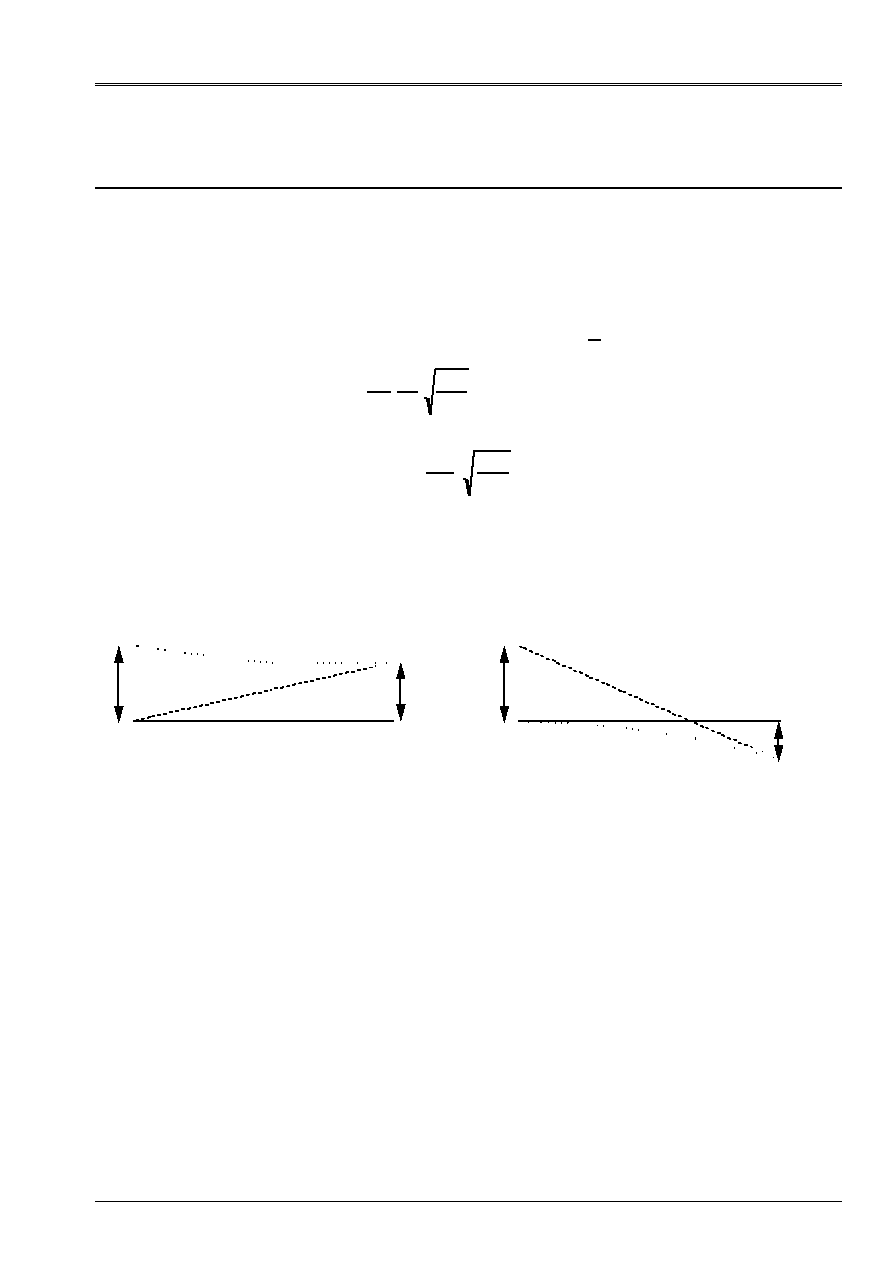
Code_Aster
®
Version
5.0
Titrate:
SDLL02 - Beam hurled, embed-free, folded up on it even
Date:
19/08/02
Author (S):
P. MASSIN, F. LEBOUVIER
Key
:
V2.02.002-B
Page:
3/10
Manual of Validation
V2.02 booklet: Linear dynamics of the beams
HT-66/02/001/A
2
Reference solution
2.1
Method of calculation used for the reference solution
The reference solution is that given in card SDLL02/89 of the guide VPCS which presents
method of calculation in the following way:
By the method of stiffness dynamic, one shows that the folded up beam admits frequencies
double, solution of:
cos
()
=
0
I
=
2i
-
1
(
)
2
F
I
=
1
2
I
2
L
2
E I
Z
With
I
=
1, 2,
…
For a rectangular section, one obtains:
F
I
=
2i
-
1
(
)
2
R
8 L
2
E
12
I
=
1, 2,
…
This formulation neglects the deformations of shearing action and inertia of rotation (beam of Euler-
Bernoulli).
For the clean modes, the forms are given in guide VPCS. They are normalized with 1 or 1 with
not greater amplitude. There are results only for modes 1, 2, 3, 4, 7 and 8. By
example, the forms of the first two clean modes are as follows:
0.707
1
mode 1
0.707
1
mode 2
F
1
= 11.76 Hz
2.2
Results of reference
The results of reference are the first eight Eigen frequencies and displacements of the points
B, C for the clean modes 1, 2, 3, 4, 7 and 8. In Code_Aster, the modes are normalized to 1 with
not greater amplitude (control
NORM_MODE
). To be able to make comparisons with
the results of reference, the latter were corrected (multiplication by 1 if necessary).
2.3
Uncertainty on the solution
There is no uncertainty on the solution because it is analytical.
2.4 References
bibliographical
[1]
PIRANDA J.: Run and Directed Work of Vibrations of the Structures - Mechanical Option -
École Nationale Supérieure of Mechanics and Micromechanics - Laboratory of Mechanics
Applied - Besancon (France (1983).)
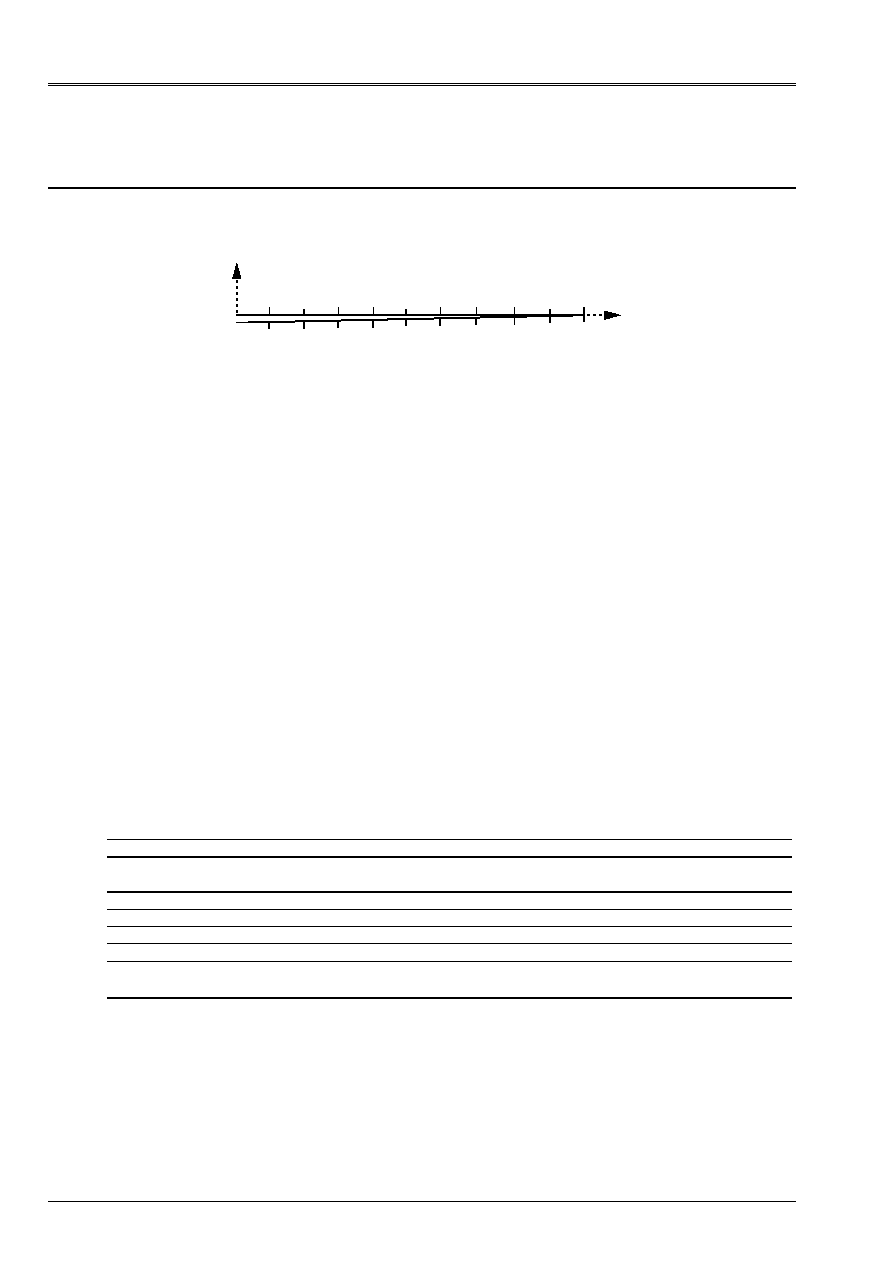
Code_Aster
®
Version
5.0
Titrate:
SDLL02 - Beam hurled, embed-free, folded up on it even
Date:
19/08/02
Author (S):
P. MASSIN, F. LEBOUVIER
Key
:
V2.02.002-B
Page:
4/10
Manual of Validation
V2.02 booklet: Linear dynamics of the beams
HT-66/02/001/A
3 Modeling
With
3.1
Characteristics of modeling
X
y
With
C
B
The beam in 20 meshs SEG2 was cut out (10 for part AB and 10 for part BC).
The modeling used for the beams is that of Euler Bernoulli (
POU_D_E
).
Two-dimensional solutions are sought. One can thus lock for all the nodes it
displacement DZ and rotations DRX and DRY.
The end of the beam (not A) is embedded from where in this point:
DX = DY = 0. DRZ = 0.
3.2
Characteristics of the mesh
The mesh contains 21 nodes and 20 meshs of the type SEG2.
The points characteristic of the mesh are as follows:
Not A = A
Not B = B
Not C = C
3.3 Functionalities
tested
The functionalities tested are summarized in this table:
Controls
AFFE_CARA_ELEM
BEAM
“RIGHT-ANGLED”
ALL
AFFE_CHAR_MECA
DDL_IMPO
ALL
NODE
AFFE_MATERIAU
ALL
AFFE_MODELE
“MECHANICAL”
“POU_D_E”
ALL
RECU_CHAMP
“NUMERO_ORDRE”
“DEPL”
DEFI_MATERIAU
ELAS
MODE_ITER_SIMULT
METHOD
“TRI_DIAG”
CALC_FREQ
OPTION
“PLUS_PETITE”
NORM_MODE
“TRAN”
One insists on the controls
MODE_ITER_SIMULT
(method of Lanczos) for the calculation of the modes
clean and
AFFE_CHAR_MECA
for the imposition of the boundary conditions.
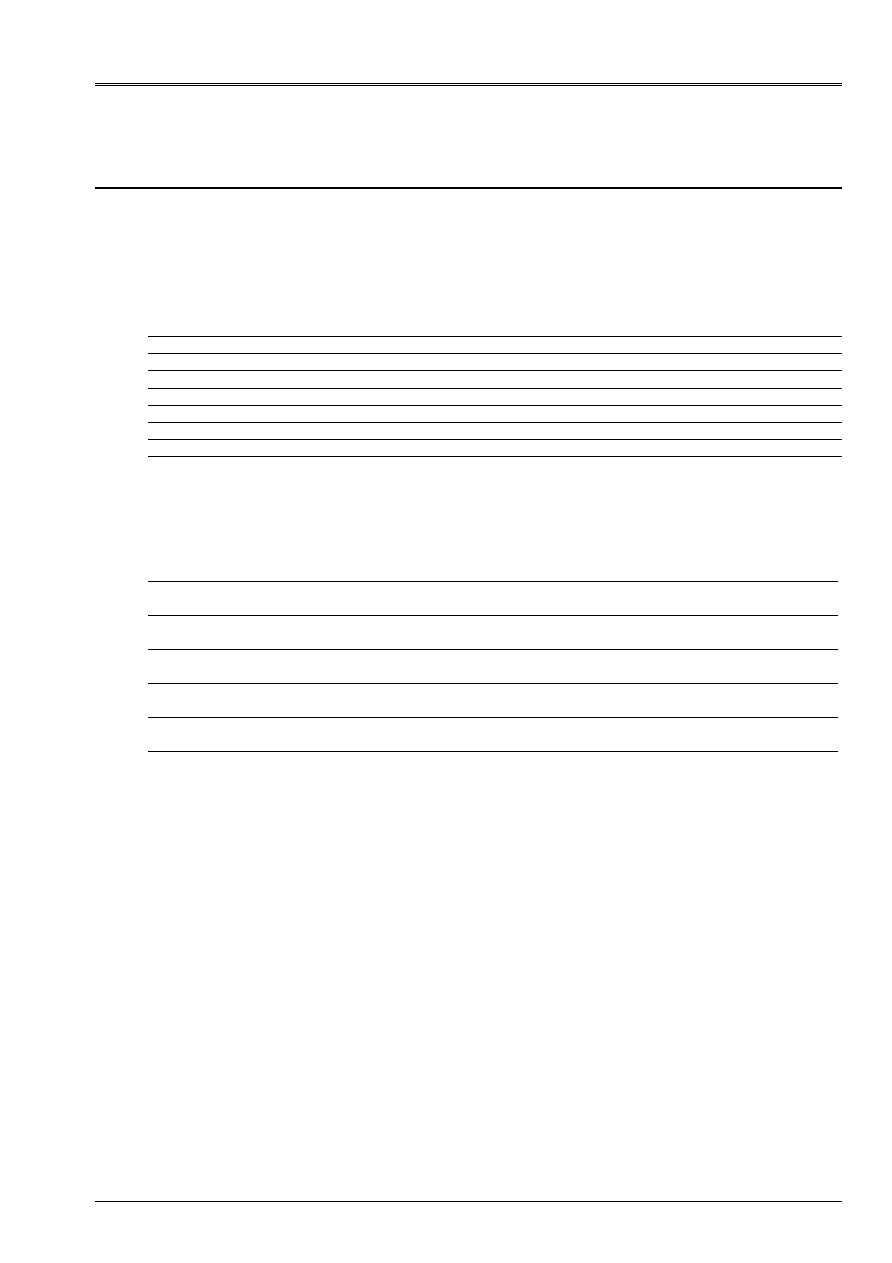
Code_Aster
®
Version
5.0
Titrate:
SDLL02 - Beam hurled, embed-free, folded up on it even
Date:
19/08/02
Author (S):
P. MASSIN, F. LEBOUVIER
Key
:
V2.02.002-B
Page:
5/10
Manual of Validation
V2.02 booklet: Linear dynamics of the beams
HT-66/02/001/A
4
Results of modeling A
4.1 Values
tested
For the frequencies of vibration of the structure, there are the following results:
Identification Reference Aster %
difference
Frequency 1
11.76
11.7642
0.04
Frequency 2
11.76
11.7642
0.04
Frequency 3
105.88
105.8811
0.00
Frequency 4
105.88
105.8812
0.00
Frequency 5
294.10
294.1780
0.03
Frequency 6
294.10
294.1806
0.03
Frequency 7
576.44
576.9802
0.09
Frequency 8
576.44
577.0079
0.10
For the modes of vibration of the structure, there are the following results:
Identification Points
Size Reference
Aster %
difference
Frequency 1
B
C
DY
DY
0.707
1.
0.69845
1.
1.2
Frequency 2
B
C
DY
DY
0.707
1.
0.72615
1.
2.7
Frequency 3
B
C
DY
DY
0.707
1.
0.70711
1.
0.01
Frequency 4
B
C
DY
DY
0.370
0.523
0.37015
0.52347
0.04
0.09
Frequency 7
B
C
DY
DY
0.707
1.
0.70711
1.
0.02
Frequency 8
B
C
DY
DY
0.388
0.549
0.38847
0.54937
0.12
0.07
4.2 Remarks
For the Eigen frequencies, the results obtained are correct. It is the same for the results
obtained concerning the clean modes. The tolerance is lower than 2% for the whole of the modes
except for the mode 2 where the tolerance lies between 2 and 3%.
4.3 Parameters
of execution
Version: NEW 3.03.09
Machine: CRAY C90
Overall dimension memory:
8 MW
Time CPU To use:
5 seconds
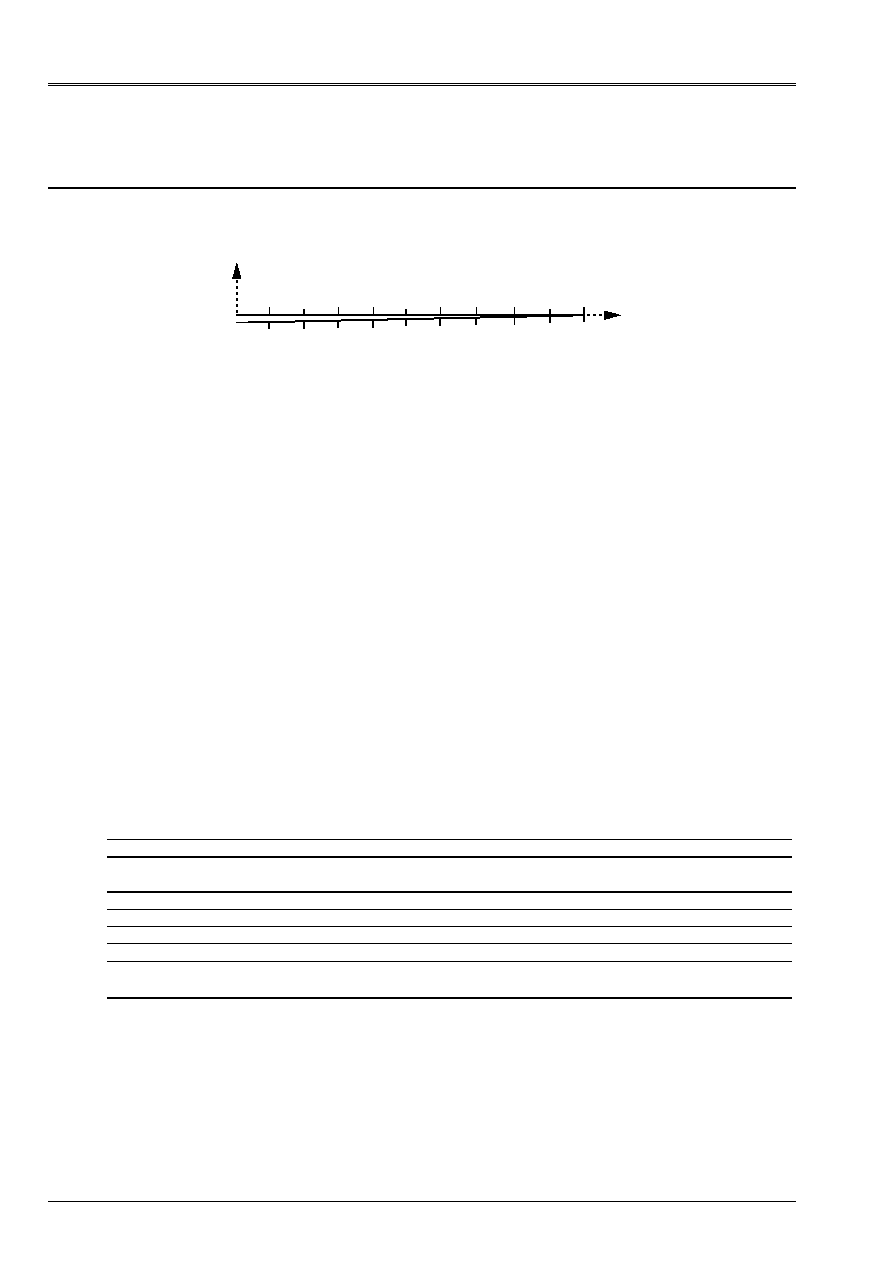
Code_Aster
®
Version
5.0
Titrate:
SDLL02 - Beam hurled, embed-free, folded up on it even
Date:
19/08/02
Author (S):
P. MASSIN, F. LEBOUVIER
Key
:
V2.02.002-B
Page:
6/10
Manual of Validation
V2.02 booklet: Linear dynamics of the beams
HT-66/02/001/A
5 Modeling
B
5.1
Characteristics of modeling
X
y
With
C
B
The beam in 20 meshs SEG2 was cut out (10 for part AB and 10 for part BC).
The modeling used for the beams is that of Euler Bernouilli (
POU_D_E
).
Two-dimensional solutions are sought. One can thus lock for all the nodes it
displacement DZ and rotations DRX and DRY.
The end of the beam (not A) is embedded from where in this point:
DX = DY = 0. DRZ = 0.
5.2
Characteristics of the mesh
The mesh contains 21 nodes and 20 meshs of the type SEG2.
The points characteristic of the mesh are as follows:
Not A = A
Not B = B
Not C = C
5.3 Functionalities
tested
The functionalities tested are summarized in this table:
Controls
AFFE_CARA_ELEM
BEAM
“RIGHT-ANGLED”
ALL
AFFE_CHAR_CINE
MECA_IMPO
ALL
NODE
AFFE_MATERIAU
ALL
AFFE_MODELE
“MECHANICAL”
“POU_D_E”
ALL
RECU_CHAMP
“NUMERO_ORDRE”
“DEPL”
DEFI_MATERIAU
ELAS
MODE_ITER_SIMULT
METHOD
“JACOBI”
CALC_FREQ
OPTION
“PLUS_PETITE”
NORM_MODE
“TRAN”
One insists on the controls
MODE_ITER_SIMULT
(method of Bathe and Wilson) for the calculation of
clean modes and
AFFE_CHAR_CINE
for the imposition of the boundary conditions.
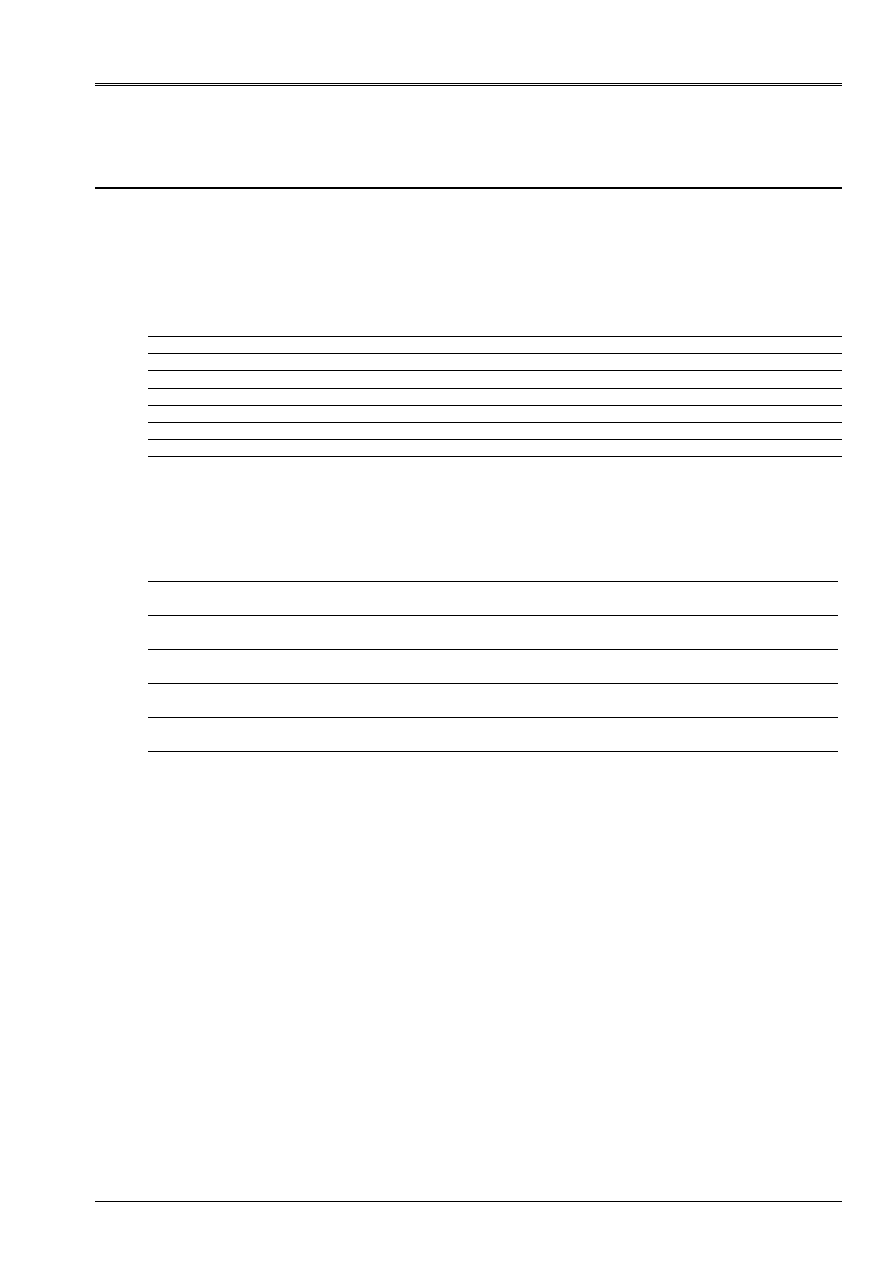
Code_Aster
®
Version
5.0
Titrate:
SDLL02 - Beam hurled, embed-free, folded up on it even
Date:
19/08/02
Author (S):
P. MASSIN, F. LEBOUVIER
Key
:
V2.02.002-B
Page:
7/10
Manual of Validation
V2.02 booklet: Linear dynamics of the beams
HT-66/02/001/A
6
Results of modeling B
6.1 Values
tested
For the frequencies of vibration of the structure, there are the following results:
Identification Reference Aster %
difference
Frequency 1
11.76
11.7642
0.04
Frequency 2
11.76
11.7642
0.04
Frequency 3
105.88
105.8811
0.00
Frequency 4
105.88
105.8812
0.00
Frequency 5
294.10
294.1780
0.03
Frequency 6
294.10
294.1806
0.03
Frequency 7
576.44
576.9802
0.09
Frequency 8
576.44
577.0079
0.1
For the modes of vibration of the structure, there are the following results:
Identification Points
Size Reference
Aster %
difference
Frequency 1
B
C
DY
DY
0.707
1.
0.69658
1.
1.47
Frequency 2
B
C
DY
DY
0.707
1.
0.73038
1.
3.31
Frequency 3
B
C
DY
DY
0.707
1.
0.70711
1.
0.02
Frequency 4
B
C
DY
DY
0.370
0.523
0.37014
0.52347
0.04
0.09
Frequency 7
B
C
DY
DY
0.707
1.
0.70711
1.
0.02
Frequency 8
B
C
DY
DY
0.388
0.549
0.38846
0.54937
0.12
0.07
6.2 Remarks
For the Eigen frequencies, the results obtained are correct. It is the same for the results
obtained concerning the clean modes. The tolerance is lower than 2% for the whole of the modes
except for the mode 2 where the tolerance lies between 3 and 4%.
6.3 Parameters
of execution
Version: NEW 3.03.09
Machine: CRAY C90
Overall dimension memory:
8 MW
Time CPU To use:
5 seconds
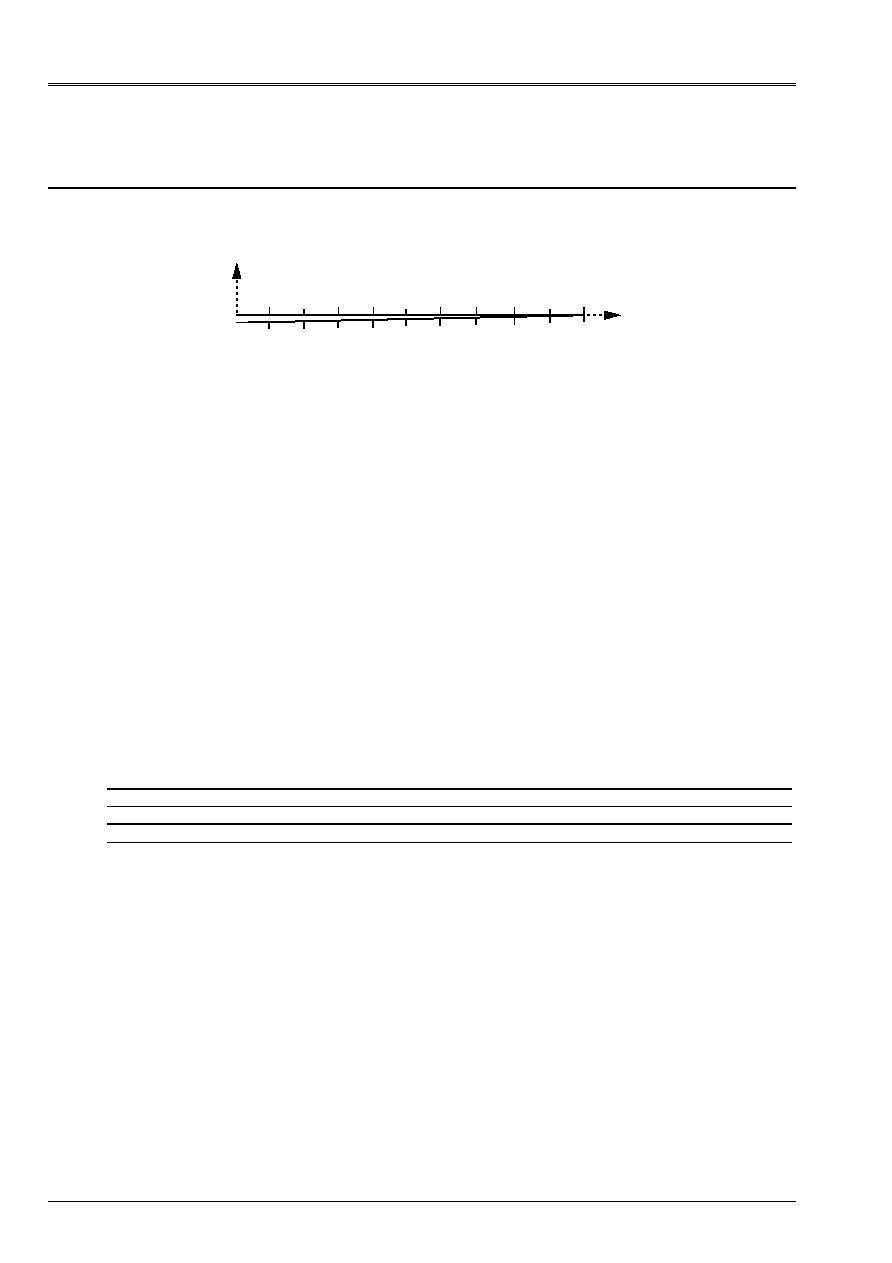
Code_Aster
®
Version
5.0
Titrate:
SDLL02 - Beam hurled, embed-free, folded up on it even
Date:
19/08/02
Author (S):
P. MASSIN, F. LEBOUVIER
Key
:
V2.02.002-B
Page:
8/10
Manual of Validation
V2.02 booklet: Linear dynamics of the beams
HT-66/02/001/A
7 Modeling
C
7.1
Characteristics of modeling
X
y
With
C
B
The beam in 20 meshs SEG3 was cut out (10 for part AB and 10 for part BC).
Modeling used is
COQUE_C_PLAN
.
The end of the beam (not A) is embedded from where in this point:
DX = DY = DRZ = 0.
7.2
Characteristics of the mesh
The mesh contains 41 nodes and 20 meshs of the type SEG3.
The points characteristic of the mesh are as follows:
Not A = A
Not B = B
Not C = C
7.3 Functionalities
tested
The functionalities tested are summarized in this table:
Controls
AFFE_CARA_ELEM
HULL
THICK
AFFE_MODELE
“MODELING”
“COQUE_C_PLAN”
MODE_ITER_SIMULT
METHOD
“SORENSEN”
CALC_FREQ
OPTION
“PLUS_PETITE”
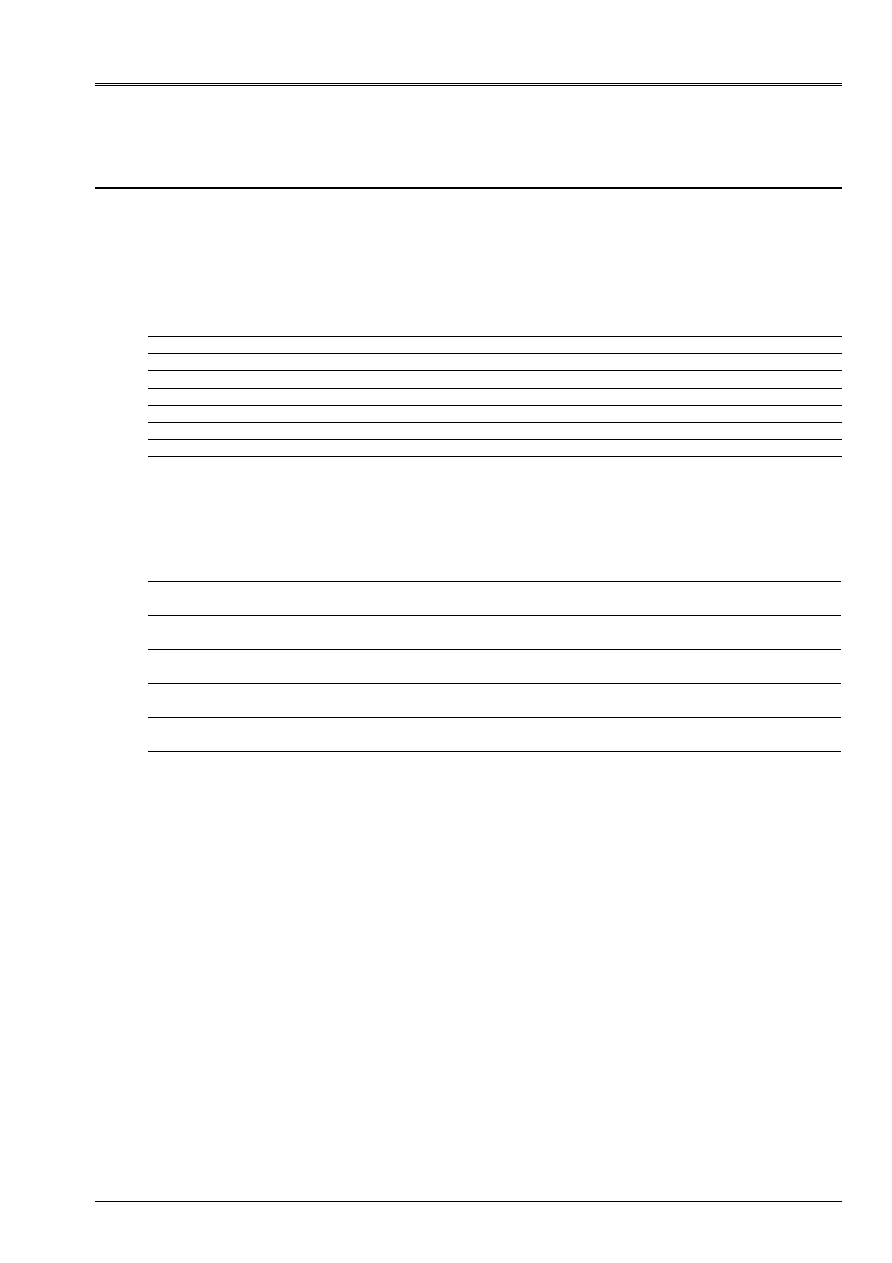
Code_Aster
®
Version
5.0
Titrate:
SDLL02 - Beam hurled, embed-free, folded up on it even
Date:
19/08/02
Author (S):
P. MASSIN, F. LEBOUVIER
Key
:
V2.02.002-B
Page:
9/10
Manual of Validation
V2.02 booklet: Linear dynamics of the beams
HT-66/02/001/A
8
Results of modeling C
8.1 Values
tested
For the frequencies of vibration of the structure, there are the following results:
Identification Reference Aster %
difference
Frequency 1
11.76
11.767
0.063
Frequency 2
11.76
11.804
0.377
Frequency 3
105.88
106.533
0.616
Frequency 4
105.88
107.556
1.583
Frequency 5
294.10
299.685
1.899
Frequency 6
294.10
304.643
3.585
Frequency 7
576.44
599.025
3.918
Frequency 8
576.44
613.506
6.430
For the modes of vibration of the structure, there are the following results:
Identification Points
Size Reference
Aster %
difference
Frequency 1
B
C
DY
DY
0.707
1.
- 0.707
1.
0.015
0.
Frequency 2
B
C
DY
DY
0.707
1.
0.707
1.
0.015
0.
Frequency 3
B
C
DY
DY
0.707
1.
0.707
1.
0.015
0.
Frequency 4
B
C
DY
DY
0.370
0.523
- 0.373
0.527
0.713
0.763
Frequency 7
B
C
DY
DY
0.707
1.
0.707
1.
0.015
0.
Frequency 8
B
C
DY
DY
0.388
0.549
- 0.403
0.571
3.990
3.936
8.2 Remarks
In this case-test, where the results are independent of the Young modulus, it is not necessary of
to modify the Young modulus retained for modeling, as in the case of the static analysis
linear, to take account of the real width of the beam.
8.3 Parameters
of execution
Version: NEW 5.04.17
Machine: SGI-Origin2000 R12000
Overall dimension memory: 16 megabytes
Time CPU To use:
2.49 seconds

Code_Aster
®
Version
5.0
Titrate:
SDLL02 - Beam hurled, embed-free, folded up on it even
Date:
19/08/02
Author (S):
P. MASSIN, F. LEBOUVIER
Key
:
V2.02.002-B
Page:
10/10
Manual of Validation
V2.02 booklet: Linear dynamics of the beams
HT-66/02/001/A
9
Summary of the results
·
Modelings A and B of the Beam type:
The problem is dealt with with very good precision on the first eight frequencies (tolerance
< 0.1%) for two modelings tested. The components of modes 3, 4, 7 and 8 are
also obtained with a good precision of about 0.1%. The precision on mode 1 is of
the command of 1% for the method of Lanczos and 0.5% for the method of Bathe and Wilson. In it
who relates to mode 2, the precision degrades himself: it is about 2.7% for the method of
Lanczos and about 3.3% for the method of Bathe and Wilson. Complementary tests
(use of the method of Lanczos by imposing boundary conditions by the control
AFFE_CHAR_CINE
) allow to think that these differences come from the method of
seek eigenvalues used.
·
Modeling
COQUE_C_PLAN
The precision on the results is good for the first three frequencies, the error is of the command
from 0.6%. It is degraded as the frequency increases, the error passes from the 4
ième
frequency to the 8
ième
from 1.5% to 6.4%. More the frequency is high plus the difference between the frequencies
double is important. The error on the modes is satisfactory for the first 7 modes
(<0.7%), it is higher for the 8
ième
(<4%). A finer mesh should allow best
to represent the modal deformations associated with the high frequencies.









